Aston Martin DB12 review: The Grander Tour
It may seem like a facelift at first, but dig deeper and you’ll find changes revolutionary for Aston Martin.
Published on Feb 01, 2024 12:15:00 PM
18,889 Views
Follow us on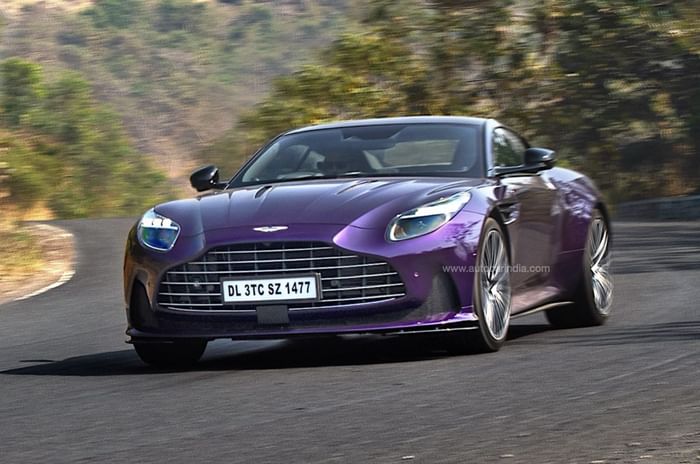
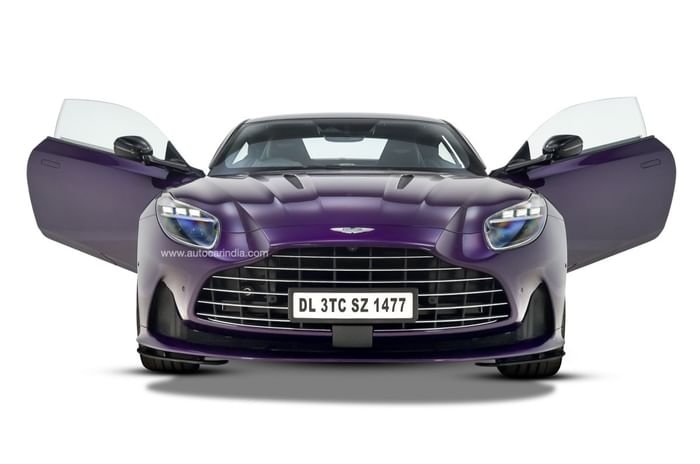
Signature ‘swan wing’ doors open subtly upwards.
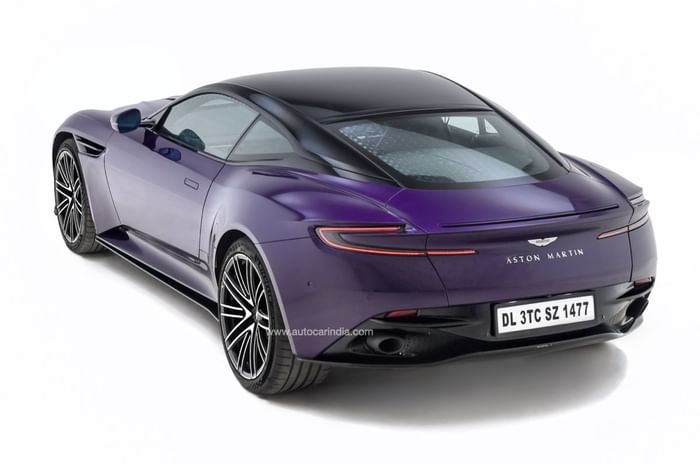
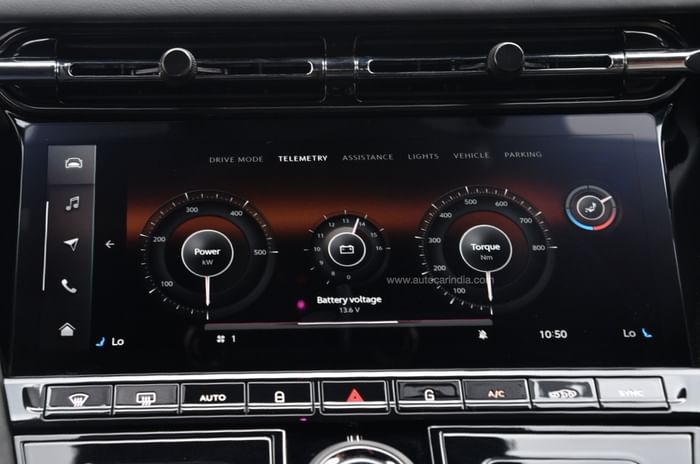
Aston Martin's first touchscreen looks good and is well featured, but some icons feel too small.
We Like
- Characterful performance
- Stunning looks
- Ride-handling balance
We Don't Like
- Expensive
- Limited after-sales support
- Hesitant gearbox
Even in the rarefied space of super-luxury and high-performance cars, it’s only so often a new Aston Martin comes along, but boy, is it an occasion when one does. Boutique in the context of giants like Ferrari and Bentley, the British marque makes only a handful of ultra-high-end models, and with ownership and management in a state of flux over the last many years, things have been inconsistent, to say the least. But with new boss Lawrence Stroll at the helm, things appear to be charging forward with renewed vigour and focus, and you need not look any further than the DB12 as evidence of this.
There are more pedestrian offerings like the Vantage and DBX, as well as more exotic stuff like the Valkyrie and upcoming Valhalla, but the DB coupe is always the heart of the brand’s range and arguably its most important model. You might look at its stunning but familiar form and think it’s a facelift of the DB11, but trust us, it really isn’t! They’ve trimmed the fat and ditched the V12 altogether (despite what the name might suggest), and have found even more power in the V8. It’s wider and lighter, there’s new suspension and a quick-acting e-diff, but most of all, it has a brand-new interior and gizmos to match. In fact, Aston says it’s created a new type of car altogether – the super tourer – where the performance of a supercar meets the long-legged luxury of a GT car.
Aston Martin DB12 exterior design
Though there’s no hiding its visual linkage to the DB11, but that’s no bad thing, is it? It borrows some elements from the DBS Superleggera too, and overall looks like a DB11 that’s been on steroids; the same essential silhouette but bursting at the seams. It’s 22mm wider, which only enhances that wide-narrow-wide ‘Coke bottle’ shape. The grille is huge now, extending to the base of the bumper and tipping forward aggressively, with a wide air-dam squeezing out from under it. The bonnet has more contours and troughs, and interestingly opens conventionally, unlike its predecessor’s, which was hinged at the front. Another cool detail are the wing mirrors with edge-to-edge fixed glass; the whole pod moves when you adjust it, rather than just the glass.
| Aston Martin DB12 Price, Mileage, Specifications, Features and Variants | |
|---|---|
| Brand | Aston Martin |
| Model Name | DB12 |
| Aston Martin DB12 Price | ₹ 5.30 crore |
| Aston Martin DB12 Range/Mileage | NA |
| Aston Martin DB12 Specifications | Coupe | 2 doors | 4 seats View All Specs |
| Aston Martin DB12 Features | LED headlight | 10.25-inch Touchscreen display | 10 airbags View All Features |
| Aston Martin DB12 Variants | 4.0 V8 Petrol Coupe View All Variants |
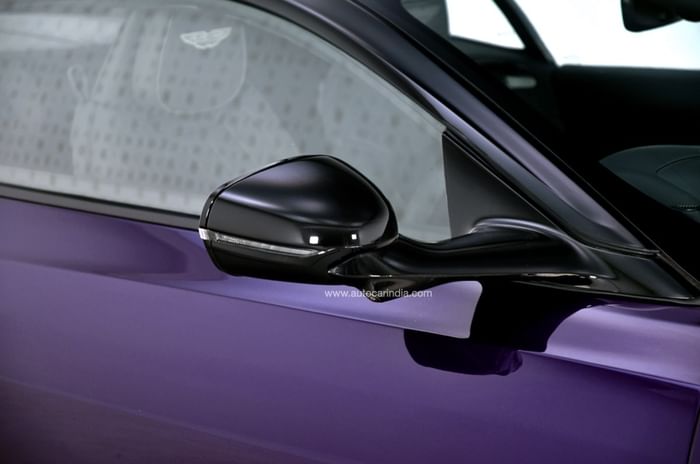
An import from the DBS is the huge air vent behind the front wheels, and the DB12 sits on 21-inch wheels front and rear with a massive 325-section rear tyre. Fun fact: it uses specially developed Michelin Pilot Sport 5S AML (Aston Martin Lagonda) tyres, much like the DB11 used Bridgestone Potenza S 007 (named after a certain fictional spy) rubber. Not much has changed aft of the doors (the ‘swan wing’ variety that open slightly upward), but again, that’s no bad thing. You still get the slim, C-shaped LED tail-lamps and the pinched roof that flows down into the wide tail. Intakes hidden in the C Pillars channel air through the boot lid and out of a small active spoiler, eliminating the need for big aero addenda. Unfortunately, the boot itself is tiny, at just 262 litres, so your grand touring would be capped at just a weekend.
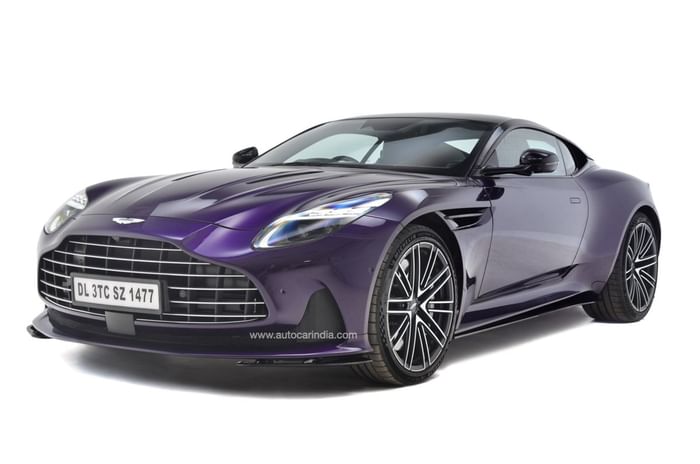
When the starting point was so good, how successful the design enhancements are is up for debate. It’s lost some of the subtlety of the DB11 to be sure, but has gained more aggression in the process, and there’s no arguing it is still a stunning piece of metal.
Aston Martin DB12 interior and space
If the outside didn’t tell you this was a new-gen car, the interior surely will. The entire dashboard is new, for a start, and the first thing you notice is that though materials are as high-grade as ever, build quality has taken a huge leap forward. Our test car is trimmed in an uninspiring black on grey, but a quick play with the online configurator reveals that you can be a lot more adventurous depending on how deep your pockets are. Several wood, metal and carbon options are available, not to mention a smorgasbord of hide and stitching options that can be mixed and matched. There are even three levels of front seats; we have the Comfort spec, but you can also get Sport or Race seats with increasingly aggressive cushioning.
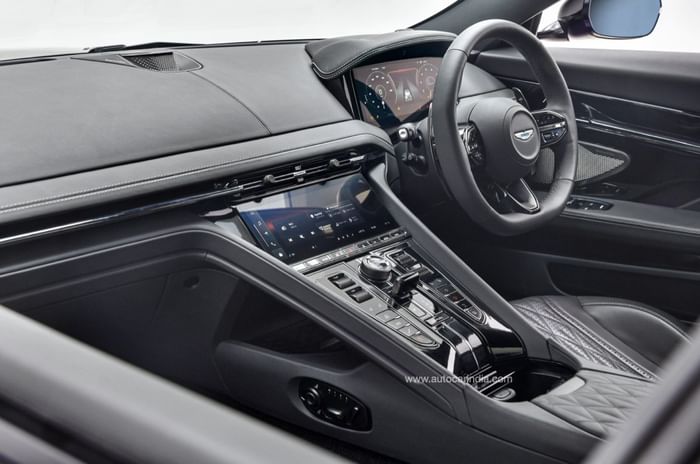
But on to the new dashboard, which takes on a more user-friendly design. The ‘waterfall’ centre console is high set and extends to the rear of the cabin, bringing into easy access not just the new 10.25-inch touchscreen, but an array of welcome physical buttons. These include shortcuts for climate control, suspension, exhaust, ESC, parking cameras and sensors, and lane-keep assist. Drive modes are selected via a rotary dial, at the centre of which sits a classy start/stop button. The four-knurled roller switches for AC and volume control work with an indescribably satisfying heft, and there’s a 911-style toggle for the gear selector.
But for all the added quality and functionality, the interior has lost some of its charm. It’s all straight lines and sharp angles, with none of the quirky design that set the DB11 apart from every other super-luxury car. Yes, the toggle gear lever is easier to use, but this is the first Aston in ages without the signature five buttons on the dash. Similarly, while the new 10.25-inch digital dial screen looks modern, it’s just a rectangle propped behind the wheel, and misses the flair of the old hooded binnacle.
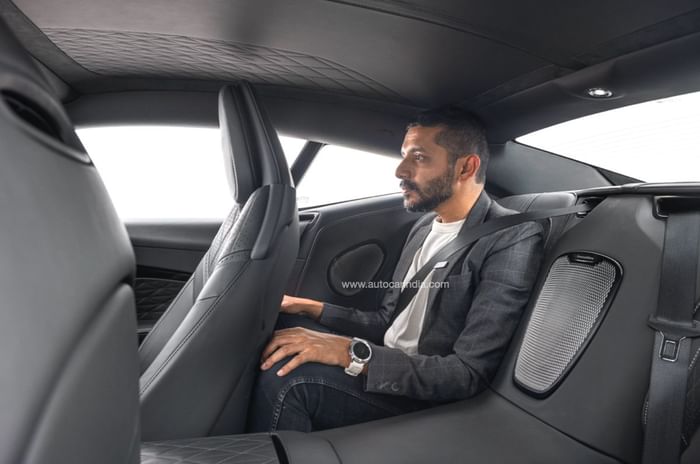
Though there are rear seats, as you might have guessed from the low and pinched roof, there isn’t much room. It’s strictly for young kids, while medium-sized adults could perhaps bear the squeeze for short journeys; certainly not cross-continent jaunts.
Aston Martin DB12 features
Another significant change is the all-new E&E architecture, which was something previously borrowed from Mercedes-Benz. For a small-volume brand, outsourcing such a thing is usually the better way to go, but Aston Martin has invested in developing a new system in-house, which will be used in all upcoming models, including the upcoming new Vantage and DBX facelift. Though now free from the shackles of the last-gen Mercedes system used before, some parts remain, like the indicator/wiper stalk and the capacitive touch buttons on the steering wheel.

The investment seems to have paid off, with a UI and UX that’s modern and feature-packed, on both 10.25-inch screens. The dials are customisable and change appearance with the drive modes, while the touchscreen response is good and animations are slick. Some icons are too small, however, making them tricky to tap on the move, and we found a few glitches in our test car’s system, like menus getting stuck on screen, concealing other functions. The optional 15-speaker, 1,170W Bowers & Wilkins music system not only sounds divine but also looks good with its aluminium speaker grilles, and you also get ADAS features.
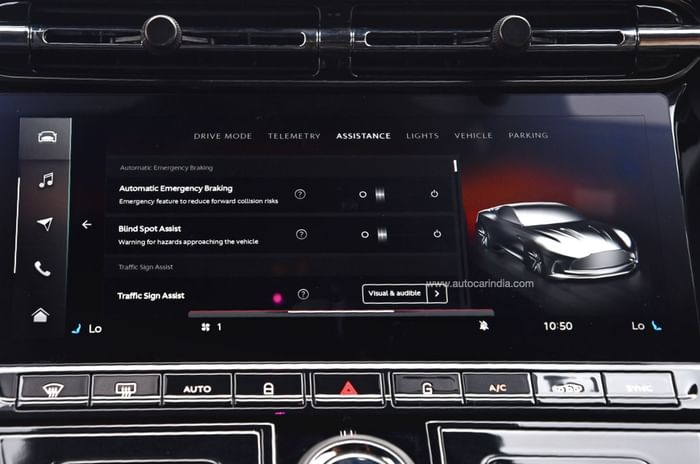
Aston Martin DB12 engine, gearbox and performance
As we’ve seen in the likes of the DBX and Vantage, this may be AMG’s familiar 4.0-litre twin-turbo V8, but Aston Martin’s engineers have given it a character all of its own. It starts with the sound, which has a lot more depth and character to it, changing its note and volume as you pile on the revs, and always sounding good. And no, this is not just a function of adding a ‘loud’ button for the exhaust – although that is also available.
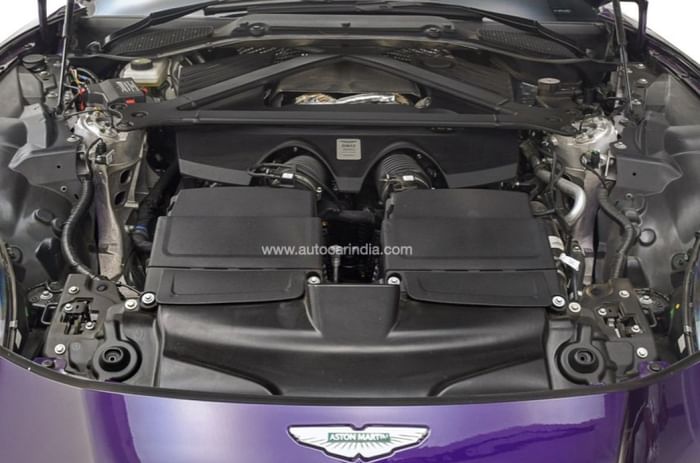
But as you prod the accelerator, too, you’ll start to see the changes. First off, while the DBX uses AMG’s 9-speed ‘MCT’ gearbox, the DB12 uses ZF’s 8-speed torque converter, mounted at the rear, and as is characteristic of the two, the ZF unit is a little bit smoother and not as aggressive with its shifts. What’s unusual, however, is that it can be slow to respond if you ask for a sudden downshift by prodding the accelerator – even in Sport+ mode. This is not the case in some of its other high-performance applications, and certainly puts a dent in the DB12’s ‘super tourer’ credentials. Things improve considerably when you dial it back by 10 percent, but more on this later. Shifts via the paddles are fine, however, though these have moved from the steering column to the wheel.
Find a good rhythm and you can really enjoy this spectacular engine. Yes, Aston’s short-lived ‘AE31’ 5.2-litre twin-turbo V12 is no more, but you won’t miss it. The V8 is over 100kg lighter than the V12, produces 80hp and 100Nm more, and arguably sounds better too. As with the sound, the performance too feels entirely different to any of its Mercedes applications. Power delivery is progressive and swelling, rather than a sledgehammer whack in the mid-range. It’s not a high-strung, fast-revving engine, but every trip to the redline feels like a journey in its own right, thanks to the fluidity of the power delivery and, oh yes, that noise.
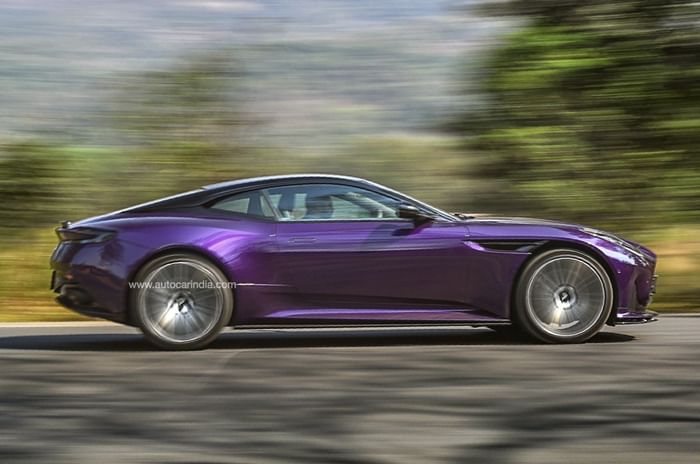
Ironically, this can belie the DB12’s prodigious 680hp and 800Nm figures because it doesn’t have the electrifying acceleration we’ve come to expect from such numbers. In fact, one potential Mumbai customer whose garage contains some pretty exotic stuff is said to have described it as ‘not that quick’ after a test drive. But that’s doing this powertrain a huge disservice, because it feels unique and soulful in a sea of one-note accelerative weapons. It’s not for crushing the quarter mile, but rather for cruising down the Golden Quadrilateral.
Aston Martin DB12 ride and handling
The new exterior design, cabin and tech are fairly obvious changes; the real secret sauce is in the chassis and suspension. The DB12 is 7 percent stiffer than the DB11, and while that might not sound like much, couple it with the thoroughly revised suspension and the changes jump out at you. If the DB11 was a 55-inch TV, the DB12 is still a 55-inch TV but one that’s moved from 1080p to 8k OLED. There is a much greater breadth of ability and definition, allowing it to be simultaneously more comfortable and sharper than before.
It starts with the steering that’s almost Ferrari levels of sharp and quick. It gives surprising agility to what is quite a large vehicle, but at no point does it feel overwhelming. What sets it apart, like the tune of the engine, is the oily-smooth feel you get through the wheel (which is now round, and not squarish like the DB11’s). It feels assisted and not race-car heavy – this is a luxury product, after all – but thanks to the deletion of some isolation bushes, there’s still a clear connection to the front wheels.
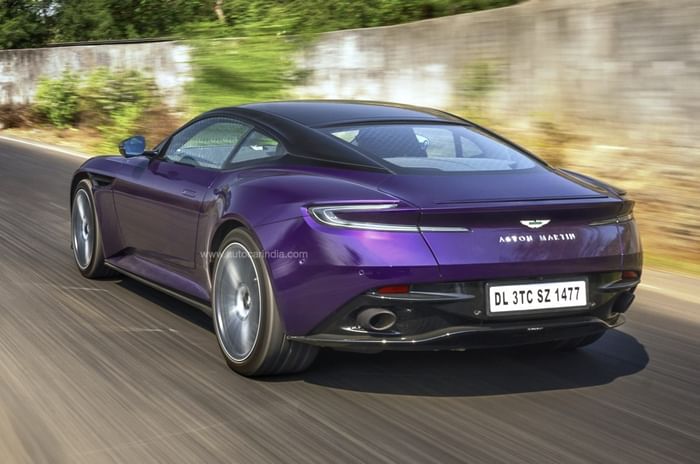
First instinct then is to dial it all the way up and charge into a corner at maximum speed, but you’ll soon be reminded that this is still more tourer, less super. Sharp steering notwithstanding, the chassis is still a little looser and freer than an all-out sportscar (stay tuned for the new Vantage), and pushing too hard makes it feel a little unwieldy. Even with those 325-section rear tyres, it will break traction, and you had better be on the ball when that wide rear end goes off.
So once again, dial it down a little, and the DB12 will really shine. Let it flow into corners, and you’ll find incredible composure even on a broken rural Indian back road. The new suspension takes it all in its stride, and in fact, delivers a ride quality that comes close to some of the best luxury cars. Best of all, it has sufficient ground clearance to tackle most speed breakers without the need for a nose lift function, and only on really serious ones would you have to be careful. Once again, then, it’s the touring side of the DB12 that somewhat outshines outright sportiness.
Aston Martin DB12 price and verdict
The Aston Martin DB12 is a phenomenal sports luxury car that so far improves on its predecessor, it’s genuinely hard to believe they share the same basic platform. It’s faster, sharper, more comfortable, more luxurious, techier, better sounding and arguably better looking too.
Trouble is, it has a bit of an identity problem, especially in the Indian exotic car context. In losing the V12, the DB12 has been given something of a symbolic repositioning; even though performance is greater, the perception isn’t. What doesn’t help is its price of Rs 4.59 crore (ex-showroom, before options) that puts it well north of the sharper Ferrari Roma. And without the pristine European cross-country roads a DB12 would normally find itself on, here in India, the DBX SUV is probably a more suitable grand tourer.

So what of the ‘super tourer’ rebrand, then? Though it certainly has the look and power figures, it hasn’t turned into a supercar. Instead, it’s widened its abilities as a luxury item, and would not feel out of place pulling up to an exotic boutique hotel, royal palace or industrialist’s daughter’s wedding. It mixes the contrasting qualities of the Roma and its other major rival, the Bentley Continental GT, to superb effect – equal parts sharp, plush and oh-so desirable. Aston Martins have always done things a little differently, and the DB12 does too. It remains the one that goes against the grain, but for those who choose it, there’s little it cannot do.
Also see:
Aston Martin Valkyrie LMH to race at 2025 Le Mans
Tech Specs 
Copyright (c) Autocar India. All rights reserved.


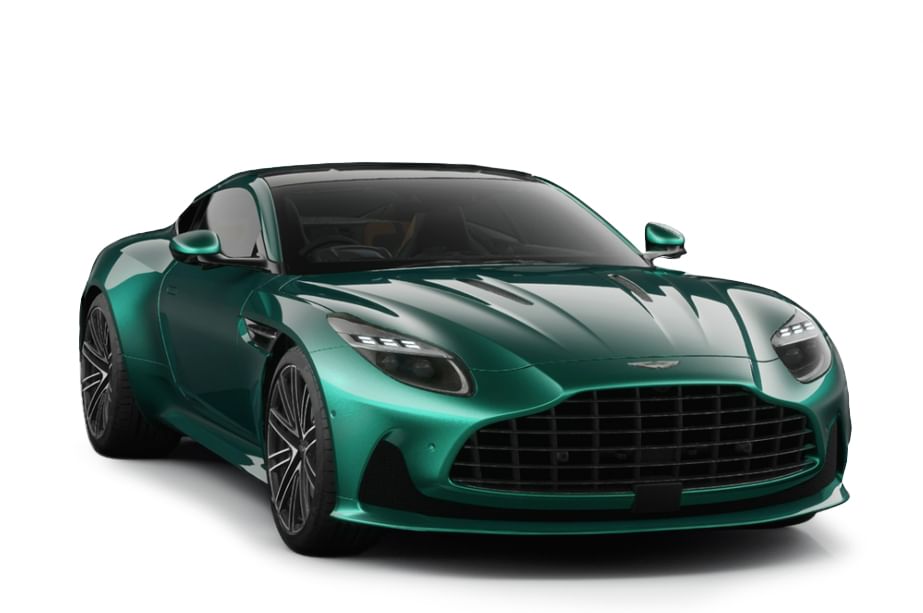

 Price
Price Engine
Engine Transmission
Transmission Efficiency
Efficiency Acceleration
Acceleration Body
Body Dimensions
Dimensions
Comments
Member Login
Personal Details
No comments yet. Be the first to comment.